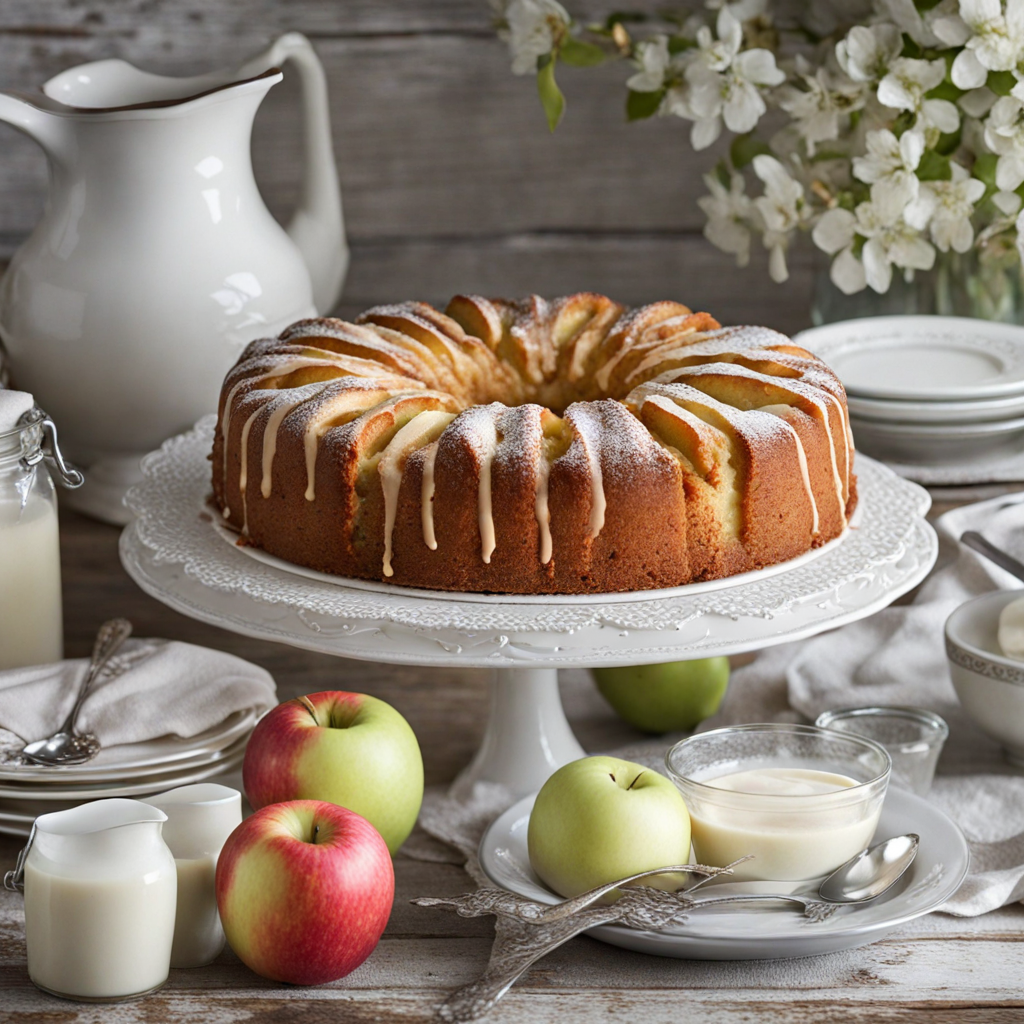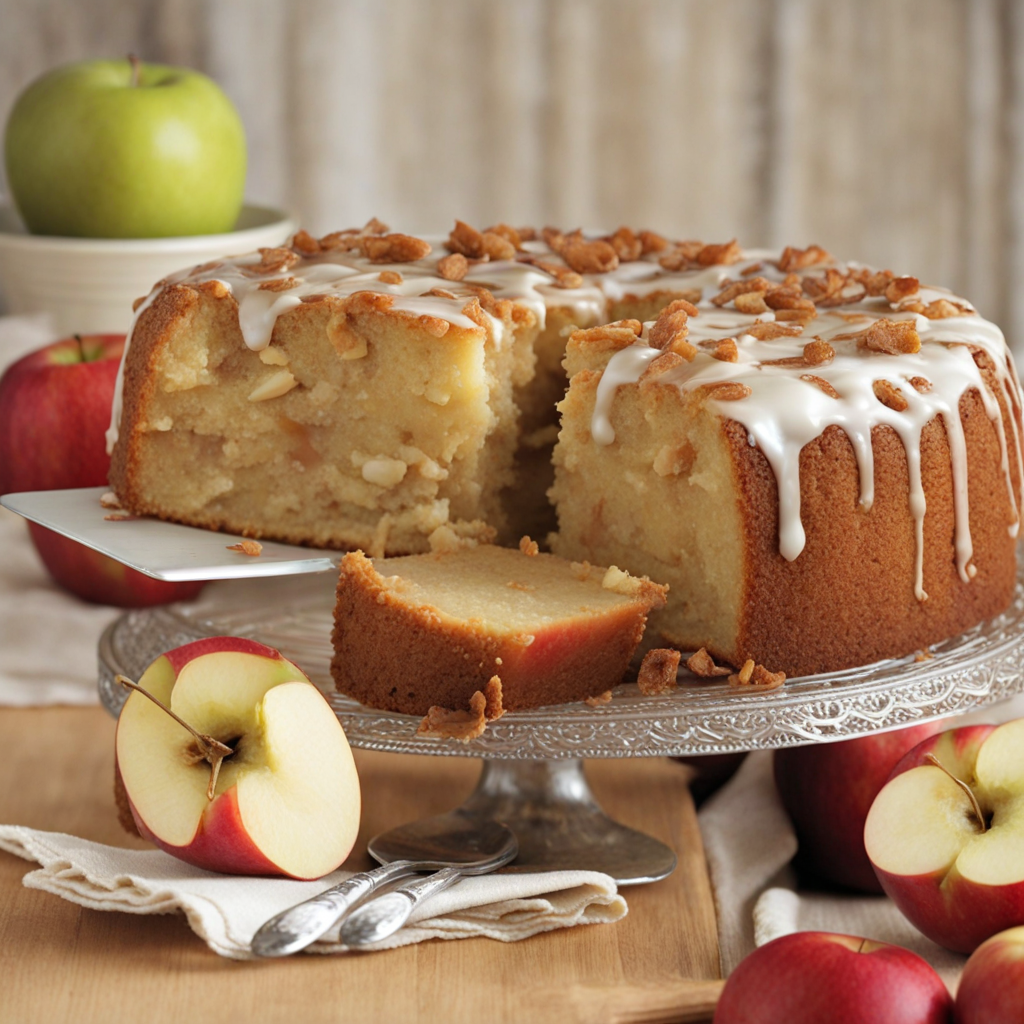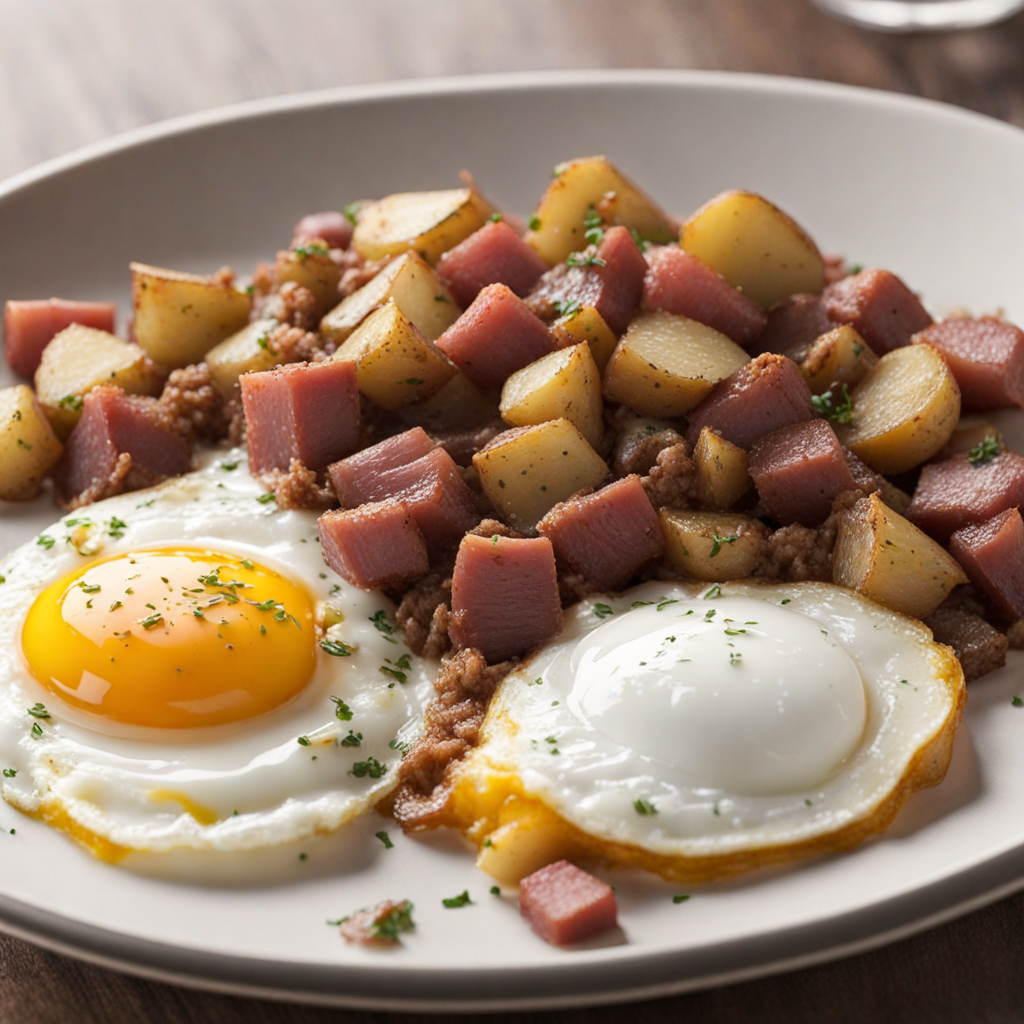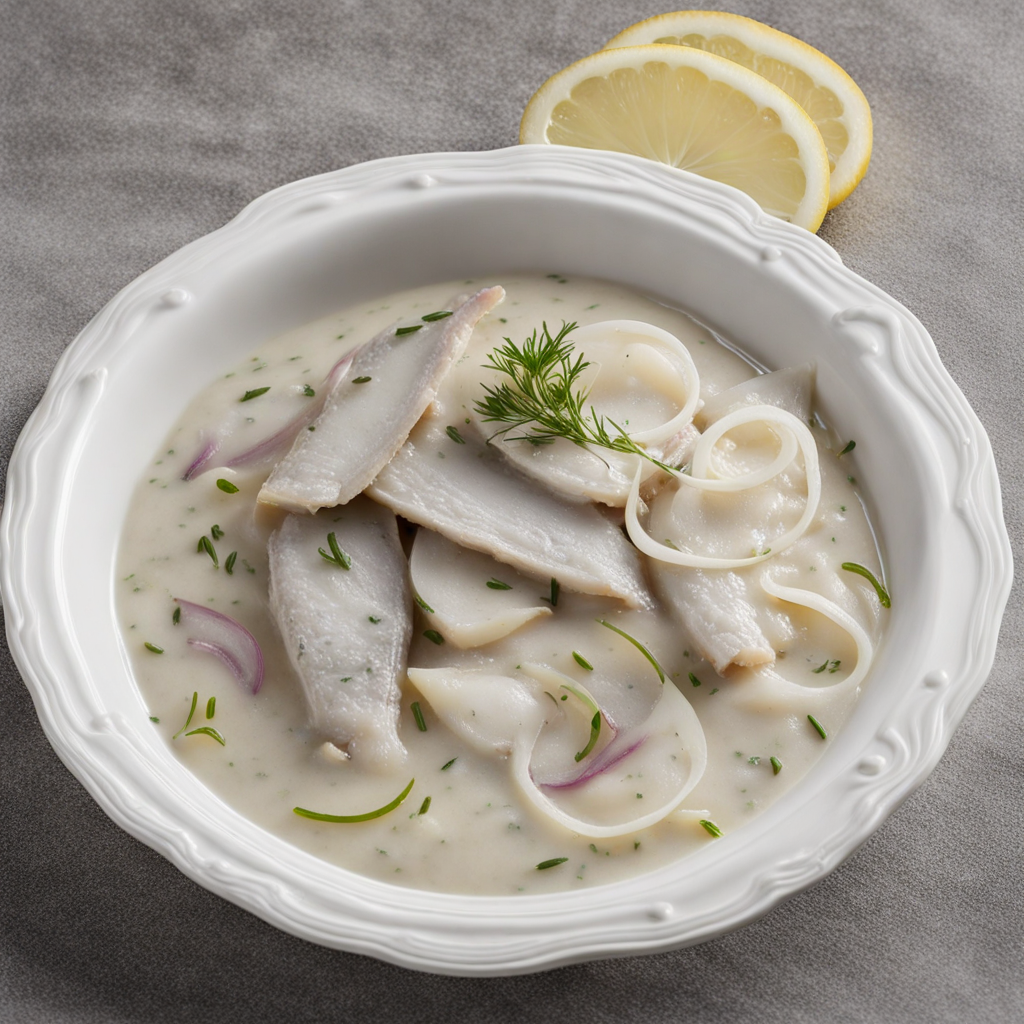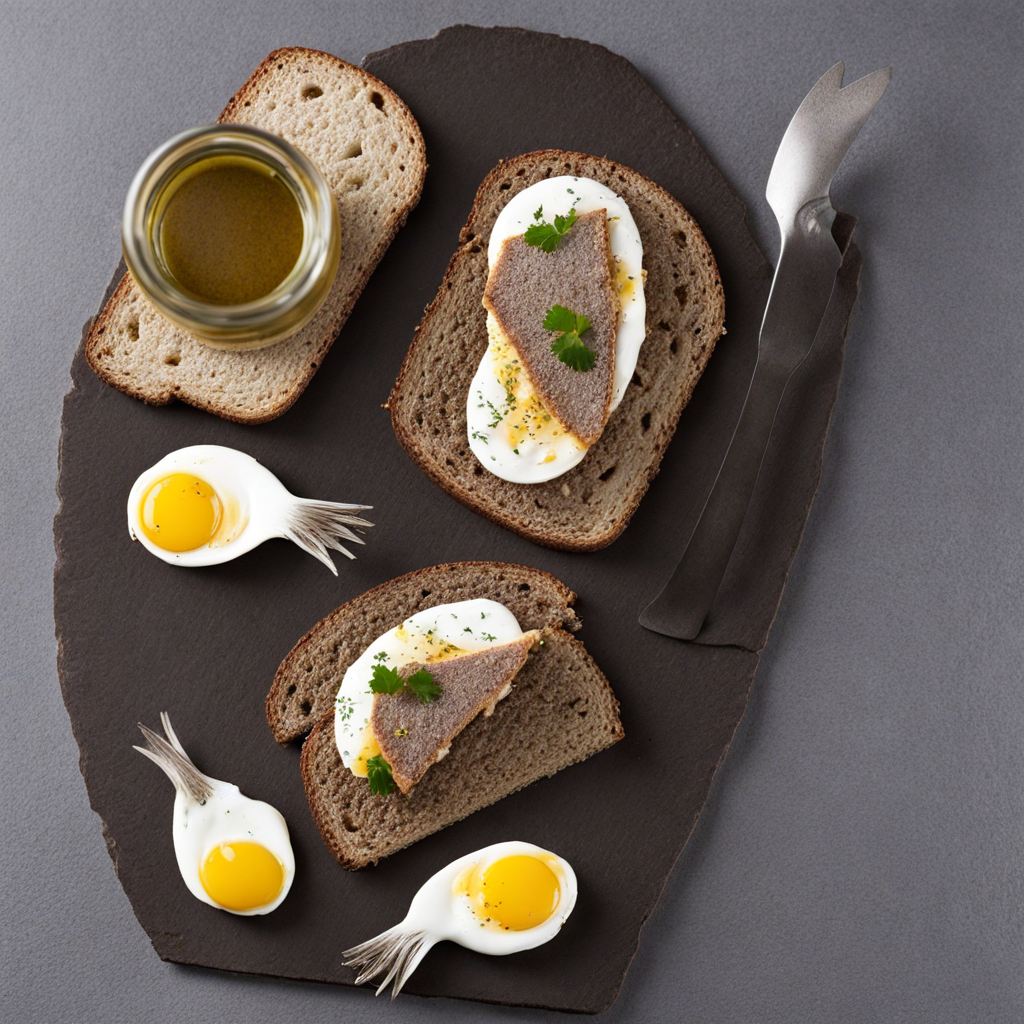Swedish Apple Cake
Swedish Apple Cake, or "Äppelkaka," is a delightful dessert that beautifully captures the essence of Sweden's culinary traditions. This cake is typically made with fresh, crisp apples, which are a staple in Swedish gardens and markets. The combination of tender cake batter and juicy apple slices creates a harmonious balance of flavors and textures. The cake is often spiced with cinnamon, offering a warm, inviting aroma that envelops the kitchen as it bakes. The addition of almond extract or crushed almonds can add a delightful nuttiness, enhancing the overall experience of this comforting treat. What sets Swedish Apple Cake apart is its rustic presentation. It is usually baked in a round or square pan, allowing the apples to be beautifully arranged atop the batter or mixed throughout. The cake can be served warm, dusted with powdered sugar, or accompanied by a scoop of vanilla ice cream or a dollop of whipped cream, making it an ideal dessert for both casual gatherings and festive occasions. The simplicity of the ingredients allows the natural sweetness of the apples to shine through, making each bite a celebration of seasonal produce. As you savor Swedish Apple Cake, you’ll discover a delightful blend of flavors that evoke the charm of Swedish countryside life. The cake is moist yet sturdy, with the apples providing bursts of juiciness that contrast with the tender cake. This dessert not only offers a taste of Sweden but also invites you to enjoy a slice of comfort and nostalgia, reminiscent of family gatherings and cozy afternoons. Whether enjoyed with coffee or tea, Swedish Apple Cake promises a unique taste experience that leaves a lasting impression.
How It Became This Dish
The History of Äppelkaka: Sweden's Beloved Apple Cake #### Origins of Äppelkaka Äppelkaka, translating to "apple cake," is a cherished dessert in Swedish cuisine, embodying the flavors and traditions of the Nordic landscape. Its roots trace back to the agricultural practices that emerged in Sweden during the late medieval period. The cultivation of apples in Sweden began in the 16th century, introduced by returning sailors and traders from southern Europe. Early varieties were hardy and adapted to the Scandinavian climate, allowing for a burgeoning apple culture. The first recorded recipes for apple-based desserts in Sweden appeared around the 18th century, coinciding with a period of increased interest in domestic cooking and baking. As people began to develop a taste for sweets, particularly baked goods, Äppelkaka emerged as a staple, reflecting the simplicity of seasonal ingredients and the ingenuity of home cooks. #### Cultural Significance Äppelkaka is more than just a dessert; it is a symbol of Swedish hospitality and home cooking. Traditionally, it is served during fika, the Swedish coffee break that emphasizes social interaction over the enjoyment of baked goods. This cake is often made with apples that are in season, showcasing the importance of local produce in Swedish culinary culture. Each family has its own cherished recipe, passed down through generations, which allows for variations in texture and flavor, from a moist cake to a crisp tart. The dessert holds a prominent place in Swedish celebrations, particularly during autumn when apples are harvested. It is common to find Äppelkaka at family gatherings, birthdays, and even festive occasions like Midsummer and Christmas. Its warm, comforting nature makes it an ideal companion to coffee or tea, providing a sense of nostalgia and comfort. #### Development Over Time As Sweden entered the 19th century, Äppelkaka began to evolve alongside changes in culinary techniques and ingredients. The introduction of baking powder in the late 1800s revolutionized cake-making, allowing for lighter and fluffier textures. Recipes started to incorporate spices like cinnamon and cardamom, reflecting broader European influences and the growing trend of flavor experimentation. By the early 20th century, Äppelkaka had become a fixture in Swedish households. It was during this time that the cake was standardized into different variations, including the popular "Svensk äppelkaka," which features a buttery crumb topping. This version highlights the use of simple, wholesome ingredients, such as wheat flour, butter, and sugar, combined with tart apples, often sourced from local orchards. The post-World War II era saw a significant shift in Sweden's social and economic landscape. With urbanization on the rise, home baking became a cherished pastime amidst the hustle of modern life. Äppelkaka remained a comforting reminder of rural traditions and family heritage. As women entered the workforce in larger numbers, the cake's simplicity and quick preparation made it an appealing choice for busy families, ensuring its continued popularity. The late 20th century ushered in a new wave of culinary exploration in Sweden, characterized by a return to traditional methods and local ingredients. Chefs and home bakers alike began to experiment with Äppelkaka, incorporating contemporary flavors and techniques. Variations emerged, including gluten-free options and the use of alternative sweeteners, allowing the cake to adapt to changing dietary preferences. #### Modern Äppelkaka Today, Äppelkaka is celebrated not just in homes but also in cafes and restaurants across Sweden. It is often featured on menus, showcasing a blend of traditional and modern interpretations. Chefs may infuse the cake with unique ingredients, such as elderflower or cardamom, while still honoring its rustic roots. The dessert has also gained international recognition, with food enthusiasts around the world embracing its charm. Social media has played a significant role in the resurgence of traditional Swedish baking. Instagram and food blogs have popularized Äppelkaka, inspiring a new generation of bakers to share their interpretations of this classic dessert. Recipes are often accompanied by beautiful imagery, emphasizing the cake's aesthetic appeal and inviting others to partake in the experience of making and enjoying it. Moreover, this cake is often associated with the concept of "lagom," a Swedish term meaning "just the right amount." The philosophy of lagom promotes balance and moderation, and Äppelkaka encapsulates this ideal with its straightforward ingredients and comforting flavor profile. It is a dessert that can be enjoyed without guilt, resonating with the current trend towards mindful eating. #### Conclusion Äppelkaka stands as a testament to the richness of Swedish culinary heritage. Its journey from simple, rustic origins to a beloved national dessert reflects broader social changes and evolving tastes. This apple cake not only highlights the importance of seasonal produce but also embodies the spirit of Swedish hospitality, making it a cherished part of family traditions and celebrations. As Äppelkaka continues to evolve, it remains firmly rooted in the past, a delicious reminder of the warmth of home, the joy of gathering, and the beauty of simplicity. Every slice tells a story, connecting generations and celebrating the timeless pleasure of good food. Whether enjoyed in a cozy kitchen or a trendy café, Äppelkaka is more than just a cake; it is a slice of Swedish culture that invites everyone to indulge in its sweet and comforting embrace.
You may like
Discover local flavors from Sweden


